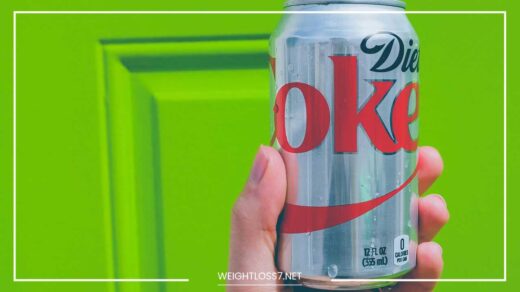How to Lose Body Fat

Lose Body Fat
Shedding Fat: A Comprehensive Guide to Body Composition Transformation
Trimming body fat is a widespread aspiration, yet navigating the whirlwind of conflicting advice and fad diets can be daunting.
This guide dismantles the myths and empowers you with sustainable strategies to achieve your body composition goals.
We’ll delve into the science of fat loss, explore dietary tactics, and craft an exercise plan that complements your goals. More importantly, we’ll help you develop a healthy relationship with food and exercise, fostering long-term success.
Demystifying Body Fat and Weight Loss
Body fat percentage, rather than weight alone, paints a clearer picture of your health. Muscle is denser than fat, so someone with a high muscle mass might weigh more but have a lower body fat percentage compared to someone with a lower weight and more fat.
Aiming for a healthy body fat percentage (around 10-20% for men, 20-30% for women) is ideal for overall health and disease prevention.
Here’s the core principle: fat loss occurs when you create a calorie deficit. This means burning more calories than you consume.
However, drastic calorie restriction backfires, leading to muscle loss and a slowed metabolism. Let’s explore effective strategies to achieve a sustainable calorie deficit.
Dietary Strategies for Sustainable Fat Loss
1. Embrace the Power of Whole, Unprocessed Foods:
- Foundation of Plenty: Make fruits, vegetables, and whole grains the bedrock of your diet.
- Nutrient Powerhouse: These foods are brimming with essential vitamins, minerals, and fiber, keeping you feeling fuller for longer and reducing cravings.
- Carb Choice Matters: Swap refined carbohydrates (white bread, pastries) for complex carbohydrates (whole grains, legumes). Complex carbs provide sustained energy, unlike the quick sugar rush and crash of refined carbs.
- Protein Prowess: Prioritize lean protein sources like chicken, fish, beans, and lentils. Protein builds and repairs muscle, promotes satiety, and helps regulate hormones that influence hunger.
2. Healthy Fats: Your Unsung Dietary Heroes:
- Don’t Fear Fat! Healthy fats play a crucial role in hormone regulation, nutrient absorption, and satiety.
- Include Wisely: Incorporate healthy fats from sources like avocados, nuts, seeds, and olive oil into your diet. These fats promote feelings of fullness, improve cognitive function, and aid in vitamin absorption.
- Limit the Villains: Restrict unhealthy fats like saturated and trans fats commonly found in fried foods, processed meats, and commercially baked goods. These fats contribute to heart disease and other chronic health conditions.
3. Mindful Eating Practices: Cultivate a Positive Relationship with Food
- Tune into Your Body: Pay close attention to hunger and fullness cues. Eat slowly and savor your food, allowing your body to register satiety signals.
- Minimize Distractions: Avoid distractions like screens while eating. This mindful practice allows you to focus on the act of eating and appreciate the flavors and textures of your food.
- Plan and Conquer: Plan your meals and snacks in advance to avoid impulsive choices fueled by hunger pangs. This ensures you have healthy options readily available when cravings strike.
4. Portion Control: Mastering the Art of Moderation
- Visual Cues: Use smaller plates to create an illusion of abundance and prevent overeating.
- Measure for Success: Measure out healthy portions to avoid mindlessly snacking from large bags or containers. This helps you stay within your calorie goals and develop a sense of mindful eating.
5. Stay Hydrated: Water is Your Body’s Ally
- Essential for Function: Water is crucial for overall health and bodily functions. It aids in digestion, regulates body temperature, and lubricates joints.
- Feeling Full: Water can also aid in feeling full. Sometimes, thirst can be misinterpreted as hunger. Drinking water before meals can help reduce calorie intake.
- Aim High: Aim for eight glasses of water per day as a baseline. Adjust this amount based on your activity level and climate.
Crafting an Exercise Plan for Effective Fat Loss
1. Make Cardio Your Ally: Burn Calories and Boost Fitness
- Engage in regular cardiovascular exercise (cardio) like brisk walking, running, swimming, or cycling. Cardio helps burn calories efficiently and improves overall cardiovascular health.
- Choose Your Intensity: There are two primary approaches to cardio: moderate-intensity for a longer duration (150 minutes per week) and vigorous-intensity for shorter bursts (75 minutes per week). Choose an intensity level you can maintain for the recommended duration.
- HIIT it Hard (Optional): High-intensity interval training (HIIT) involves alternating between short bursts of intense activity and recovery periods. Research suggests HIIT may burn more calories in a shorter amount of time, making it a time-efficient option for busy schedules.
2. Strength Training Builds Muscle: The Metabolic Furnace
- Don’t Underestimate Strength Training! Building muscle mass is a game-changer for fat loss. Muscle tissue burns more calories at rest than fat tissue, even when you’re not actively exercising. This phenomenon is called the afterburn effect, and it can help you burn more calories throughout the day.
- Building Strength for All: Strength training isn’t just about bulky muscles. It improves bone density, reduces injury risk, enhances balance and coordination, and boosts confidence.
- The Right Fit: You can incorporate strength training exercises using bodyweight, free weights, or weight machines. Choose exercises that target major muscle groups (legs, back, chest, shoulders, core) and aim for 2-3 strength training sessions per week.
- Progressive Overload: To keep challenging your muscles and promote growth, gradually increase the weight, sets, or reps over time. This principle is called progressive overload.
3. Find Activities You Enjoy: Consistency is Key
- The Fun Factor: The most effective exercise program is the one you’ll stick with. Choose activities you find enjoyable, whether it’s dancing, group fitness classes, team sports, rock climbing, or hiking. When exercise feels like fun, consistency becomes easier.
- Mix it Up: Don’t get stuck in a rut! Explore different exercise modalities to keep things interesting and challenge your body in new ways. This can help prevent plateaus and maintain motivation.
Remember: Consistency is key for long-term success. Aim for at least 150 minutes of moderate-intensity cardio or 75 minutes of vigorous-intensity cardio per week, combined with 2-3 strength training sessions. Listen to your body and schedule rest days for optimal recovery.
Building a Sustainable Lifestyle for Long-Term Fat Loss
1. Prioritize Quality Sleep: Recharge Your Body and Mind
- Sleep and Fat Loss: When sleep-deprived, your body produces more ghrelin (the hunger hormone) and less leptin (the satiety hormone), leading to increased cravings and difficulty regulating your appetite.
- Aim for Rest: Aim for 7-8 hours of quality sleep per night. Create a relaxing bedtime routine, establish a consistent sleep schedule, and optimize your sleep environment for darkness, coolness, and quiet.
2. Manage Stress: Keep Cortisol in Check
- Chronic Stress and Fat Loss: Chronic stress can lead to unhealthy food choices and cortisol spikes. Cortisol is a hormone that promotes fat storage, particularly around the midsection.
- Stress-Management Techniques: Practice stress-management techniques like yoga, meditation, deep breathing exercises, spending time in nature, or listening to calming music. Find healthy ways to cope with stress to support your fat loss goals and overall well-being.
3. Surround Yourself with Support: A Network for Success
- The Power of Community: Having a support system of friends, family, or a fitness buddy can significantly boost motivation and keep you accountable. Share your goals with loved ones, find a workout partner, or join a fitness community for encouragement and support.
- Professional Guidance: Consider consulting a registered dietitian or certified personal trainer for personalized guidance on nutrition and exercise plans tailored to your specific needs and goals.
Conclusion: A Journey, Not a Destination
Losing body fat is a journey, not a destination. It’s about adopting a sustainable lifestyle that prioritizes your health and well-being.
By incorporating the strategies outlined in this guide, you can achieve lasting results, improve your body composition, and develop a healthy relationship with food and exercise.
Remember, it’s not just about the numbers on the scale; it’s about feeling your best, having more energy, and reaching your full potential.
Additional Tips:
- Track Your Progress: Monitor your progress by tracking your weight, body measurements, and how your clothes fit. Focus on non-scale victories like increased strength, endurance, and improved body composition.
- Celebrate Milestones: Acknowledge and celebrate your achievements along the way, big or small. This helps maintain motivation and reinforces positive behaviors.
- Be Patient and Kind to Yourself: Progress takes time and dedication. There will be setbacks and challenges. Be patient with yourself, learn from setbacks, and recommit to your goals.
Embrace the journey, focus on building healthy habits, and remember – a healthy and sustainable approach is the key to achieving your body composition goals and living a fulfilling life.
Advanced Strategies for Optimizing Fat Loss
This section dives deeper into some advanced strategies you can consider to further optimize your fat loss journey. However, it’s important to establish a solid foundation with the core principles outlined earlier before incorporating these techniques.
1. Macronutrient Tracking:
While not essential for everyone, tracking your macronutrients (carbohydrates, protein, fat) can provide a more precise way to manage your calorie intake and optimize body composition. There are various online tools and mobile apps that can help you track your macros.
2. Intermittent Fasting (IF):
Intermittent fasting (IF) is an eating pattern that cycles between periods of eating and fasting. There are various IF protocols, such as the 16/8 method (fasting for 16 hours and eating within an 8-hour window). Research suggests IF can be effective for weight loss and may offer additional health benefits.
3. Pre and Post-Workout Nutrition:
- Pre-Workout Fuel: Consume a small, easily digestible snack 30-60 minutes before your workout to provide your body with energy. This could be a piece of fruit with nut butter or a protein shake.
- Post-Workout Replenishment: Within 30 minutes after your workout, consume a combination of protein and carbohydrates to aid muscle recovery and glycogen (stored energy) repletion. A good option is Greek yogurt with berries or grilled chicken with brown rice.
4. Supplement Savvy:
- Focus on Whole Foods First: Prioritize getting your nutrients from a balanced diet rich in whole foods.
- Targeted Supplements: Consider specific supplements like protein powder to support muscle building or fish oil for its anti-inflammatory properties. However, consult a healthcare professional before starting any new supplements.
5. Body Composition Analysis:
Bioelectrical impedance analysis (BIA) or DEXA scans can provide a more detailed picture of your body composition, including muscle mass, body fat percentage, and water weight. This information can be valuable for tracking progress and making adjustments to your plan.
6. Mind-Body Connection:
- Stress Management: As mentioned earlier, chronic stress can hinder fat loss efforts. Techniques like mindfulness meditation and deep breathing can help manage stress and promote overall well-being.
- Strength of Mind: Maintaining a positive mindset and setting realistic goals are crucial for long-term success. Visualize your goals, celebrate achievements, and focus on the positive changes you’re making to your health.
Remember:
- It’s advisable to consult with a healthcare professional or registered dietitian before implementing any significant changes to your diet or exercise routine. They can help you create a personalized plan that aligns with your individual needs and health goals.
- Advanced strategies are meant to complement a solid foundation of healthy eating and exercise habits. Don’t get overwhelmed – focus on mastering the core principles first.
Final Word:
This comprehensive guide has equipped you with the knowledge and tools to embark on your fat loss journey with confidence.
Remember, consistency, a sustainable approach, and a healthy relationship with food and exercise are key to achieving lasting results.
Embrace the journey, celebrate your progress, and enjoy the process of transforming your body and improving your overall health.

















